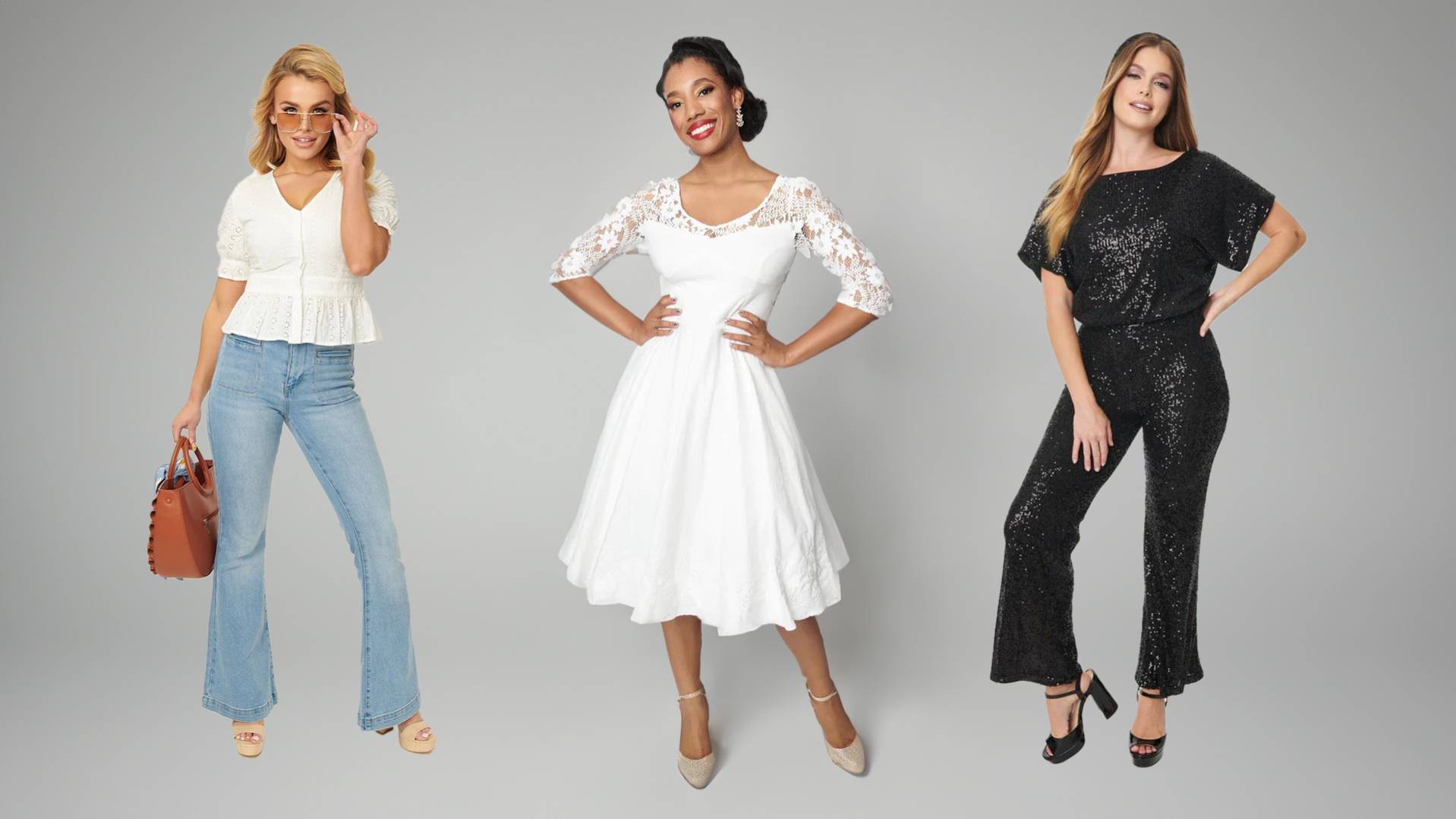Common Fabric Types Used in Branded Clothing and What They Mean
Common Fabric Types Used in Branded Clothing and What They Mean
Blog Article
The Importance of Lasting Clothes: Just How It Influences the Environment and Your Wardrobe
Lasting garments is progressively recognized for its critical duty in reducing the ecological impact of the quick fashion sector. By concentrating on environment-friendly products and honest manufacturing techniques, it attends to pressing ecological problems. This shift not only benefits the planet however additionally influences consumer choices, resulting in a much more thoughtful approach to closet management. Recognizing these dynamics raises crucial questions concerning fashion's future and individual duty in forming it.
The Ecological Footprint of Rapid Fashion

Benefits of Lasting Materials
Sustainable materials use considerable benefits, particularly through environmentally friendly material options that reduce environmental harm. These products additionally show longevity and durability, lowering the demand for regular substitutes. Therefore, they add to a much more lasting apparel industry and promote liable consumer behavior.
Eco-Friendly Textile Choices
While the apparel industry has actually long been related to rapid patterns and ecological damage, the rise of environment-friendly fabric selections presents a transformative chance. Lasting materials such as natural cotton, hemp, and Tencel have gained appeal because of their reduced eco-friendly influence. These fabrics are commonly created without unsafe chemicals and call for much less water, lowering their carbon footprint - Branded Clothing. Furthermore, several green materials are naturally degradable, contributing to a circular economic climate by minimizing waste. Choosing lasting products not just sustains ecologically accountable practices yet additionally advertises healthier communities. As consumers come to be extra aware of their purchasing power, the need for environment-friendly fabrics encourages brand names to introduce and adopt even more lasting manufacturing approaches, inevitably benefiting the earth and future generations
Longevity and Longevity Advantages
Many customers are significantly identifying the sturdiness and long life advantages of sustainable products in their garments options. Unlike traditional fabrics, sustainable materials such as natural cotton, hemp, and recycled polyester are crafted to stand up to deterioration, resulting in garments that last longer. This reduced regularity of replacement not only saves consumers money over time yet additionally reduces waste produced by fast style. On top of that, lasting garments usually uses green production approaches that improve textile toughness, adding to a decrease in the overall carbon footprint. By purchasing long lasting garments, consumers can grow a much more lasting closet while enjoying premium items that preserve their aesthetic and capability gradually. As a result, sturdiness and longevity stand as crucial advantages of choosing sustainable materials.
Reducing Waste Through Sustainable Practices
Minimizing waste in the fashion industry can be achieved with ingenious methods such as upcycling and repurposing products. Furthermore, adopting minimal closet methods urges consumers to prioritize high quality over quantity, eventually lowering clothes intake. With each other, these techniques add considerably to an extra sustainable apparel design.
Upcycling and Repurposing Materials
Upcycling and repurposing materials have become innovative methods in the apparel industry, transforming thrown out textiles right into valuable brand-new items. This strategy not only reduces waste however likewise encourages imagination and originality in garments design. By taking old garments and products, designers can produce distinct items that mirror individual style while minimizing the demand for new resources. Furthermore, upcycling often calls for much less energy and water compared to standard manufacturing processes, considerably reducing the environmental footprint of fashion. As customers become more knowledgeable about sustainability, the popularity of upcycled clothes proceeds to rise, promoting a circular economic climate. Inevitably, these methods add to a more lasting future, where fashion prioritizes ecological health and wellness over fast production and usage.

Minimal Wardrobe Techniques
As people increasingly seek to decrease their ecological influence, adopting minimal wardrobe techniques has actually acquired traction as a reliable strategy to lasting fashion. These approaches highlight quality over quantity, encouraging customers to curate a useful link smaller collection of flexible, resilient apparel. By focusing on classic pieces that can be combined and matched, individuals can lower the regularity of acquisitions and eventually reduce waste.Additionally, minimalism advertises conscious consumption, prompting customers to assess the ecological and ethical implications of their choices. This technique not only cultivates an extra lasting way of living yet also streamlines everyday decision-making relating to attire. As people embrace go to the website minimal concepts, they contribute to a fashion society that values sustainability and responsible consumerism, inevitably bring about an extra eco-conscious society.
The Function of Ethical Labor in Sustainable Fashion
While lots of consumers are progressively familiar with the environmental consequences of their clothes selections, the importance of honest labor methods in sustainable style can not be overlooked. Ethical labor includes fair salaries, risk-free working problems, and respect for employees' legal rights, creating the backbone of accountable style manufacturing. Brands that prioritize ethical labor not only boost communities but also established a standard for accountability in the industry.Moreover, the assimilation of moral practices fosters openness, making it possible for customers to make educated choices regarding their purchases. This technique contrasts sharply with rapid style's unscrupulous labor models, which typically focus on revenue over people. By supporting companies dedicated to honest labor, consumers add to a system that values human dignity alongside ecological sustainability. Honest labor is not merely an add-on; it is crucial to the more comprehensive goal of lasting style, making certain that the quest for eco-friendliness does not come at the expenditure of human rights.
The Impact of Lasting Apparel on Carbon Emissions
Lasting clothes has the potential to significantly lower carbon emissions related to the fashion business. Traditional garment manufacturing adds significantly to greenhouse gas emissions, mainly due to energy-intensive production procedures and making use of non-renewable resources. In contrast, sustainable style concentrates on environment-friendly products, such as organic cotton or recycled fibers, which commonly require less power to produce.Moreover, sustainable brands tend to adopt more reliable production methods, decreasing waste and decreasing total emissions. By focusing on resilience and timeless style, lasting clothes urges consumers to purchase much less often, further minimizing the carbon footprint related to overconsumption.Additionally, numerous sustainable brand names are committed to openness in their supply chains, enabling customers to make informed options that straighten with their values. Eventually, changing towards lasting clothes can lead to a considerable reduction in carbon emissions, adding to a much healthier world and a much more lasting future for the garment industry.
Sustaining Local Economic Situations With Sustainable Options
The change toward sustainable clothing not only addresses environmental concerns but also significantly advantages neighborhood economic situations. By selecting sustainable fashion, consumers typically support small services and local artisans, boosting area resilience. These enterprises commonly run on a smaller sized range, focusing on workmanship and honest methods over mass production.Investing in locally made sustainable garments cultivates task development and stimulates economic growth within neighborhoods. As consumers come to be extra knowledgeable about the environmental influence of their purchases, they increasingly look for products that mirror their worths. This need pop over here motivates local producers to take on lasting practices, adding to a circular economy.Moreover, sustaining regional organizations reduces transportation discharges, aligning with eco-conscious consumer actions. The interconnectedness of lasting garments and neighborhood economies emphasizes the necessary duty that private choices play in promoting both financial and environmental wellness. By cultivating these neighborhood connections, neighborhoods can thrive while also functioning in the direction of an extra sustainable future.
Changing Your Wardrobe: Tips for a Lasting Closet
As people seek to lower their ecological influence, transforming a wardrobe right into a sustainable closet becomes a crucial action. One effective technique is to examine existing apparel, maintaining just items that are used consistently and that straighten with sustainability objectives. Prioritizing quality over quantity is vital; purchasing durable items from environment-friendly brands can considerably reduce waste.Additionally, including used things can rejuvenate a wardrobe while reducing environmental damages. Organizing garments swaps with buddies or donating extra items can better promote sustainability.When shopping, individuals must look for materials that are organic, recycled, or biodegradable, and stay clear of quick style retailers - Branded Clothing. Ultimately, exercising mindful consumption by thoughtfully considering each acquisition can add to a more sustainable way of living. By executing these suggestions, one can develop a wardrobe that mirrors personal style while supporting environmental stewardship
Often Asked Inquiries
Just How Can I Identify Lasting Clothing Brands?
To identify lasting clothing brands, one should look into products made use of, look for accreditations like Fair Trade, and analyze the brand's openness concerning their production processes, labor techniques, and ecological influence, making sure ethical and eco-friendly techniques are focused on.
What Are the Costs Related To Lasting Style?
The expenses related to lasting fashion can differ significantly. Greater production expenses, ethical sourcing, and green products frequently bring about boosted retail costs, which may hinder some customers while interesting ecologically conscious buyers.
Can Lasting Garments Be Stylish and Fashionable?
Sustainable clothes can without a doubt be stylish and fashionable. Developers increasingly focus on ingenious materials and ethical production techniques, proving that style and sustainability can coexist. Customers now have diverse choices that blend visual appeals with environmental awareness.
Exactly How Does Laundering Clothes Affect Their Sustainability?
Washing clothes greatly impacts sustainability by consuming water and power, adding to air pollution, and triggering microplastic release. Frequent washing can deteriorate textiles, reducing their life-span and increasing the need for replacements, inevitably worsening ecological concerns.
What Is the Life-span of Sustainable Clothes Compared to Quick Style?
The lifespan of sustainable garments generally goes beyond that of quick style things, frequently enduring numerous years due to quality products and workmanship. In comparison, rapid fashion garments may break down rapidly, requiring more constant substitutes. Sustainable apparel is significantly acknowledged for its crucial duty in reducing the environmental effect of the fast fashion sector. While several consumers are increasingly mindful of the ecological effects of their apparel selections, the value of ethical labor methods in lasting style can not be overlooked. Branded Clothing. Sustainable clothes has the possible to significantly lower carbon exhausts associated with the fashion market. In comparison, lasting style concentrates on eco-friendly products, such as natural cotton or recycled fibers, which often require less power to produce.Moreover, sustainable brand names often tend to adopt a lot more reliable production practices, minimizing waste and reducing general exhausts. By prioritizing toughness and ageless design, lasting clothes encourages customers to get much less regularly, more minimizing the carbon impact associated with overconsumption.Additionally, numerous sustainable brands are dedicated to transparency in their supply chains, enabling customers to make enlightened selections that line up with their values
Report this page